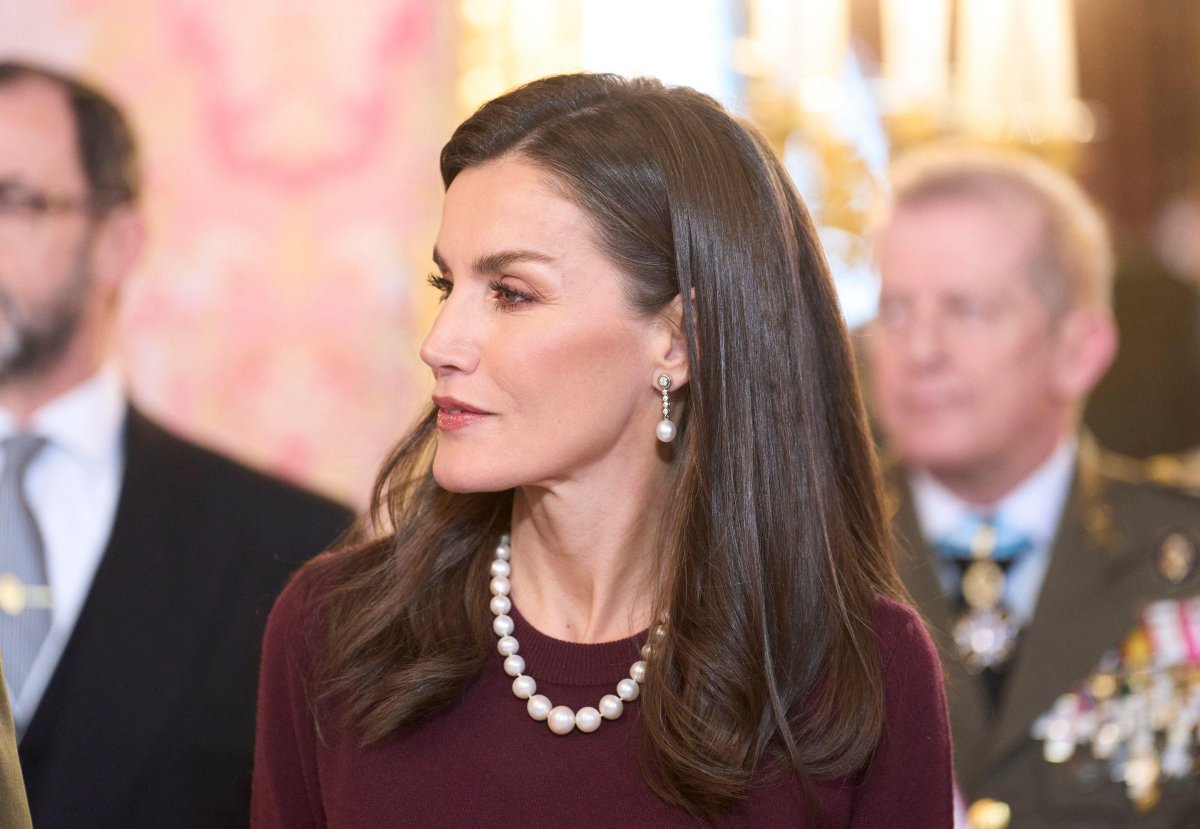
On Monday, the Spanish royals attended the Pascua Militar celebrations in Madrid, and Queen Letizia brought out a special strand of family pearls for the occasion.
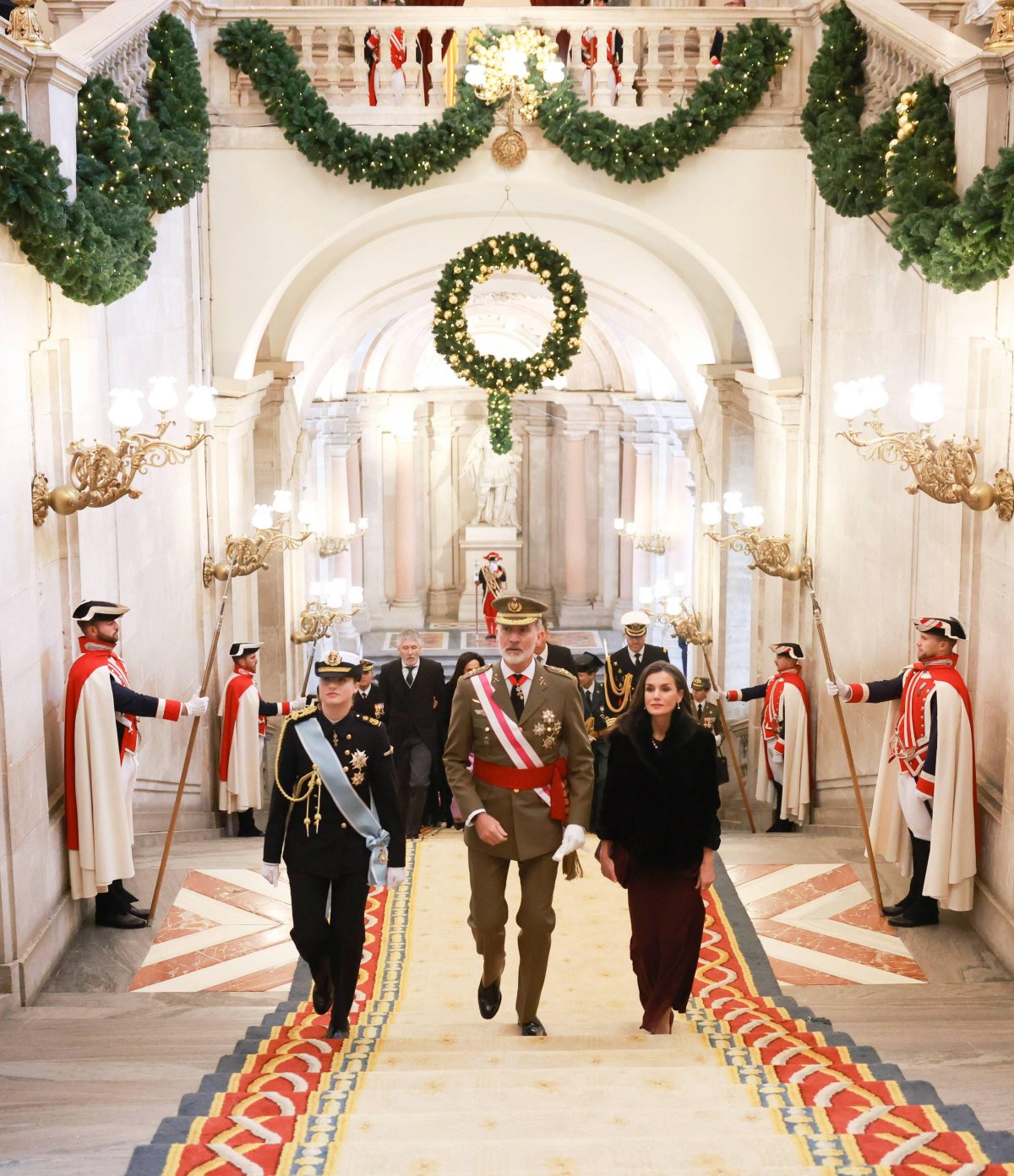
The King and Queen of Spain were joined by the Princess of Asturias as they marked the traditional Epiphany Day celebrations at the Royal Palace in Madrid on January 6. The tradition, which dates to the eighteenth century, was established by King Carlos III of Spain. The festivities include a military parade and a reception at the palace.
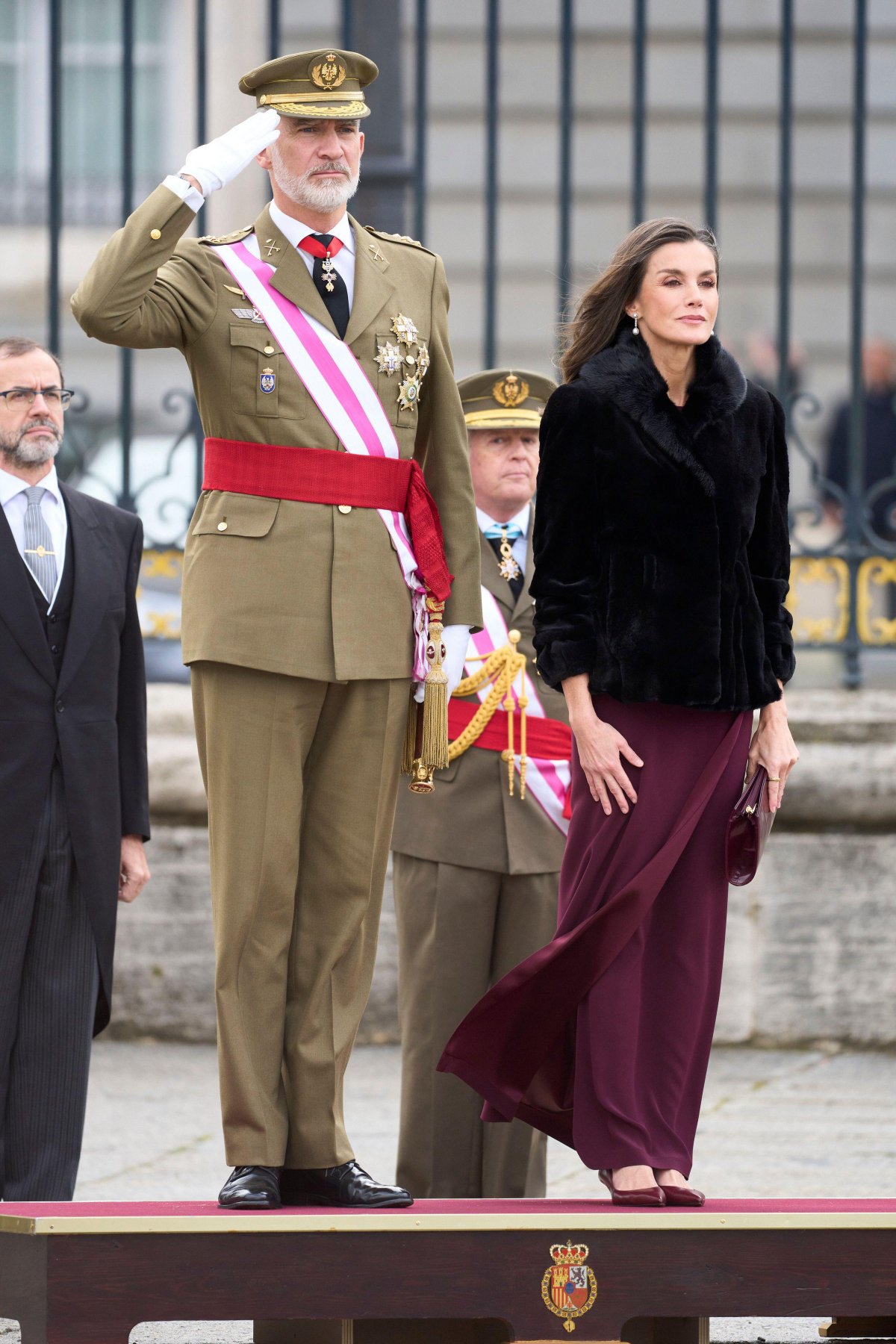
Both King Felipe and Princess Leonor were in uniform for the occasion, while Queen Letizia abided by the usual dress code for the event: a gown or a blouse and long skirt, worn with jewelry suitable for a daytime event. For the chilly parade, she wrapped up warmly in the same fur jacket that we recently saw her wear at the Quirinal Palace in Rome.
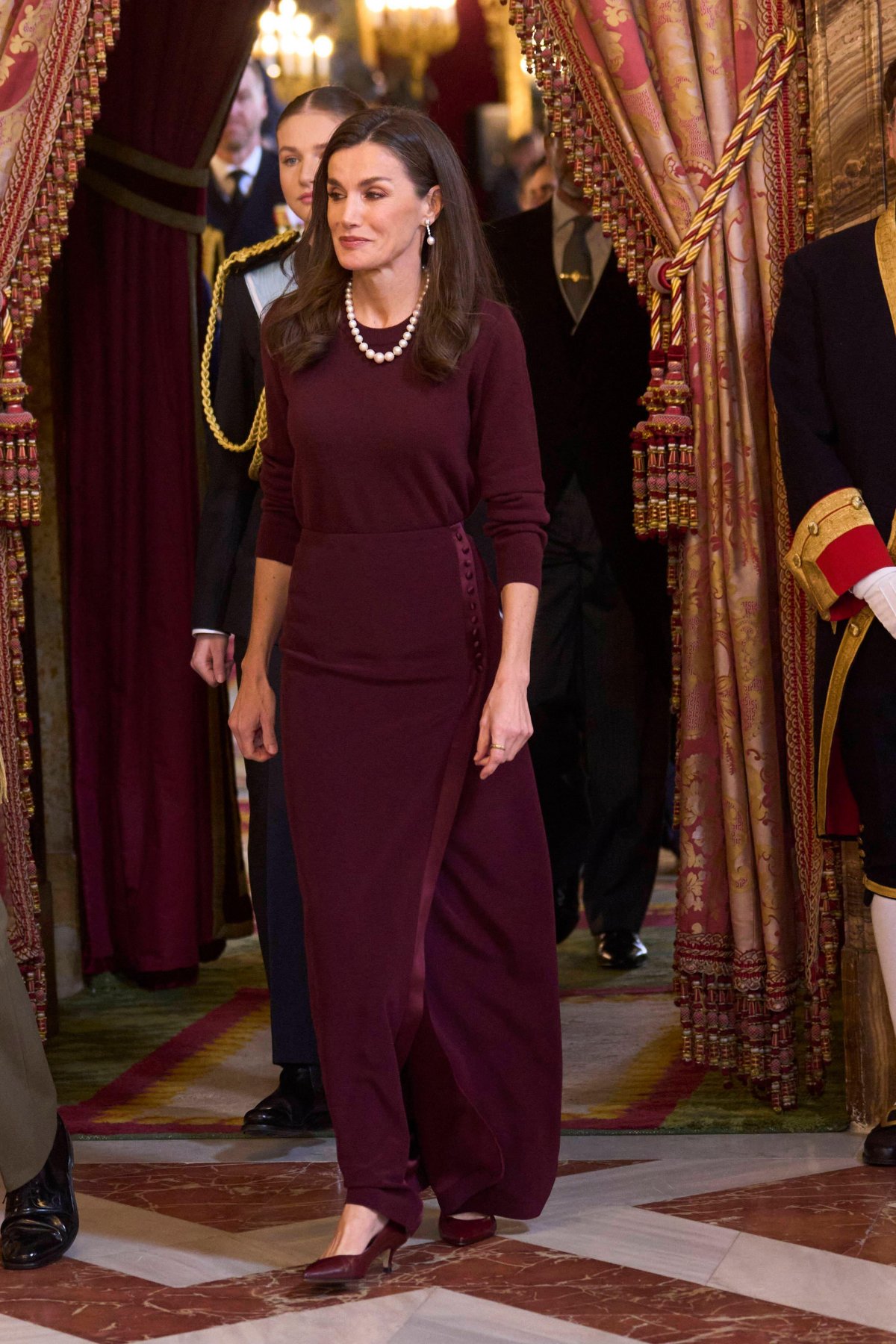
When she removed her jacket for the palace reception, we could see that this year’s ensemble was a sweater worn with a matching long skirt and low heels, all in a trendy shade of burgundy.
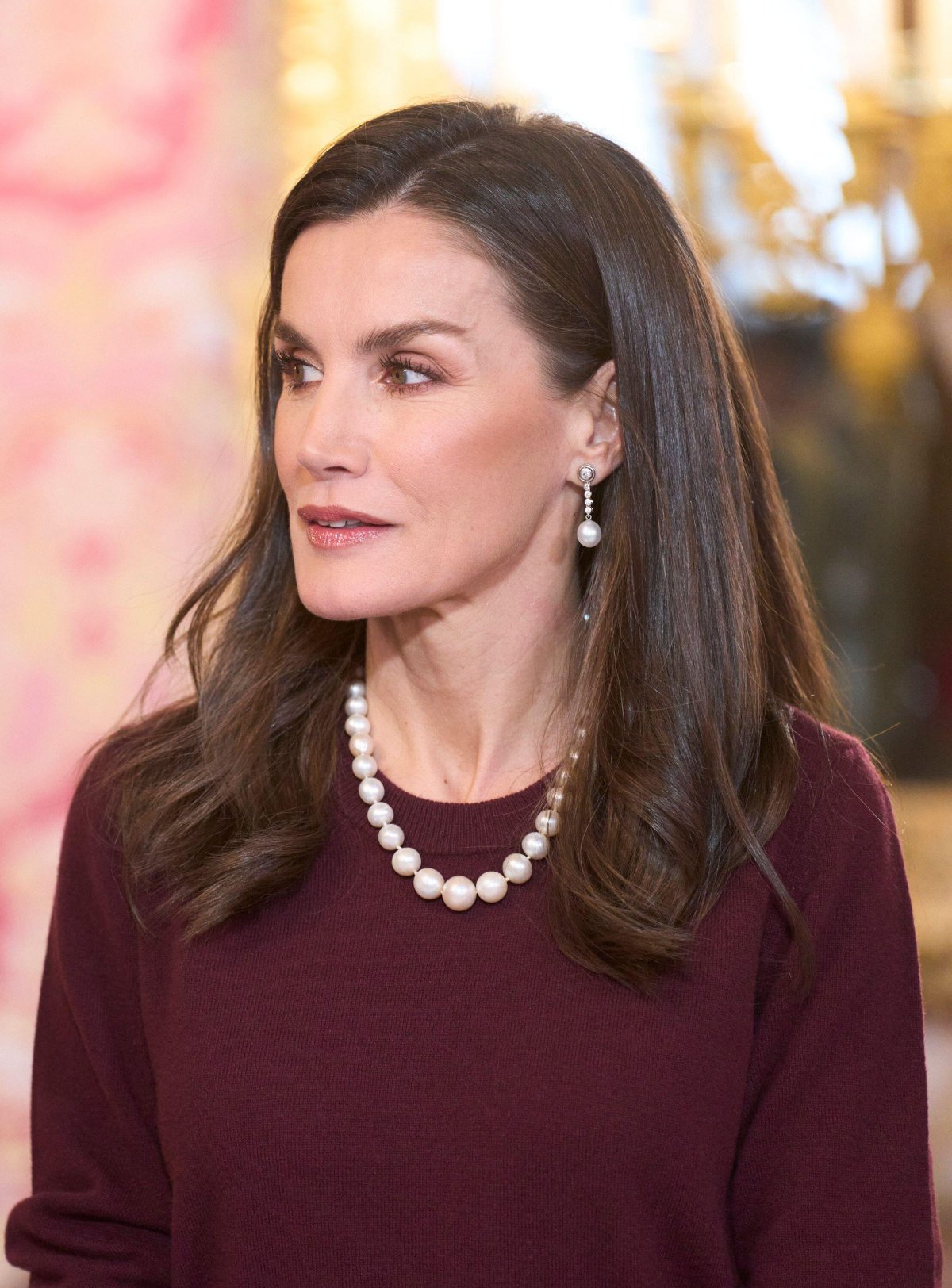
For both the parade and the reception, Queen Letizia wore a special necklace with a lengthy family history: the pearls from the joyas de pasar collection.
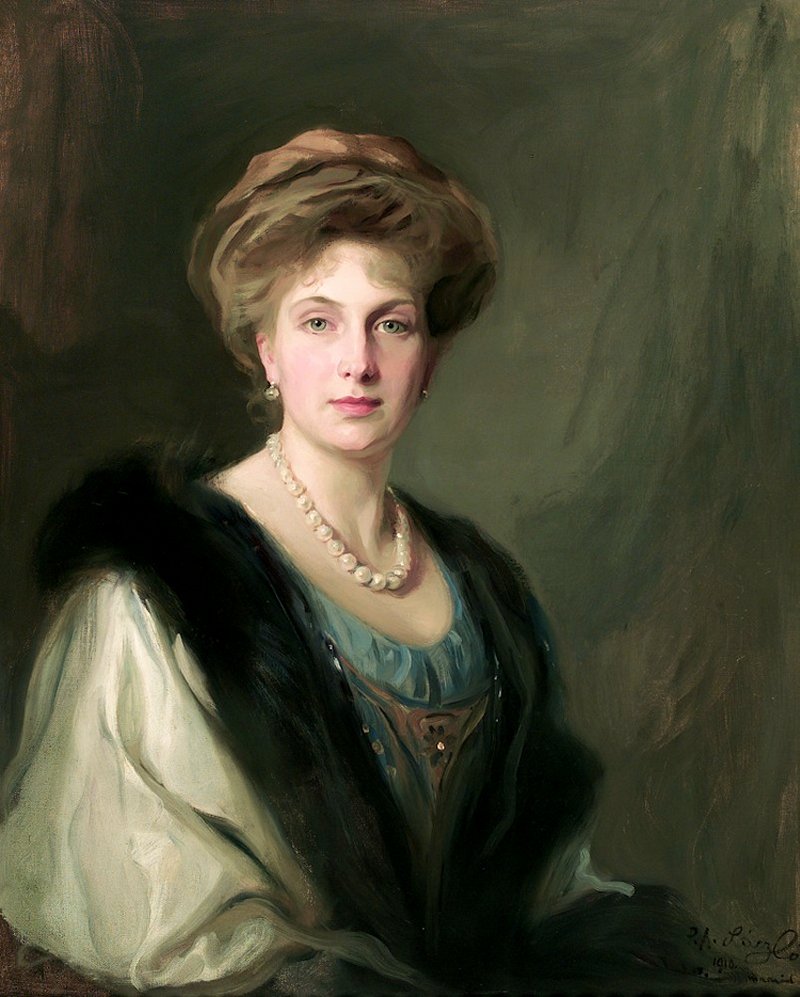
The necklace consists of 37 large, round white pearls. It originally belonged to King Felipe’s great-grandmother, Queen Ena of Spain. Born a British princess, Ena was a granddaughter of Queen Victoria, and she shared her grandmother’s belief in the importance of organization where heirloom jewels were concerned. In her will, Ena established the joyas de pasar, a collection of her jewelry that she intended to be passed from monarch to monarch, for the use of the Queen of Spain.
The pearls, which had been a wedding gift to Ena from her husband, King Alfonso XIII, in 1906, were part of that collection. Ena wears the necklace above in a portrait painted by Philip de László just a few years after her royal marriage.
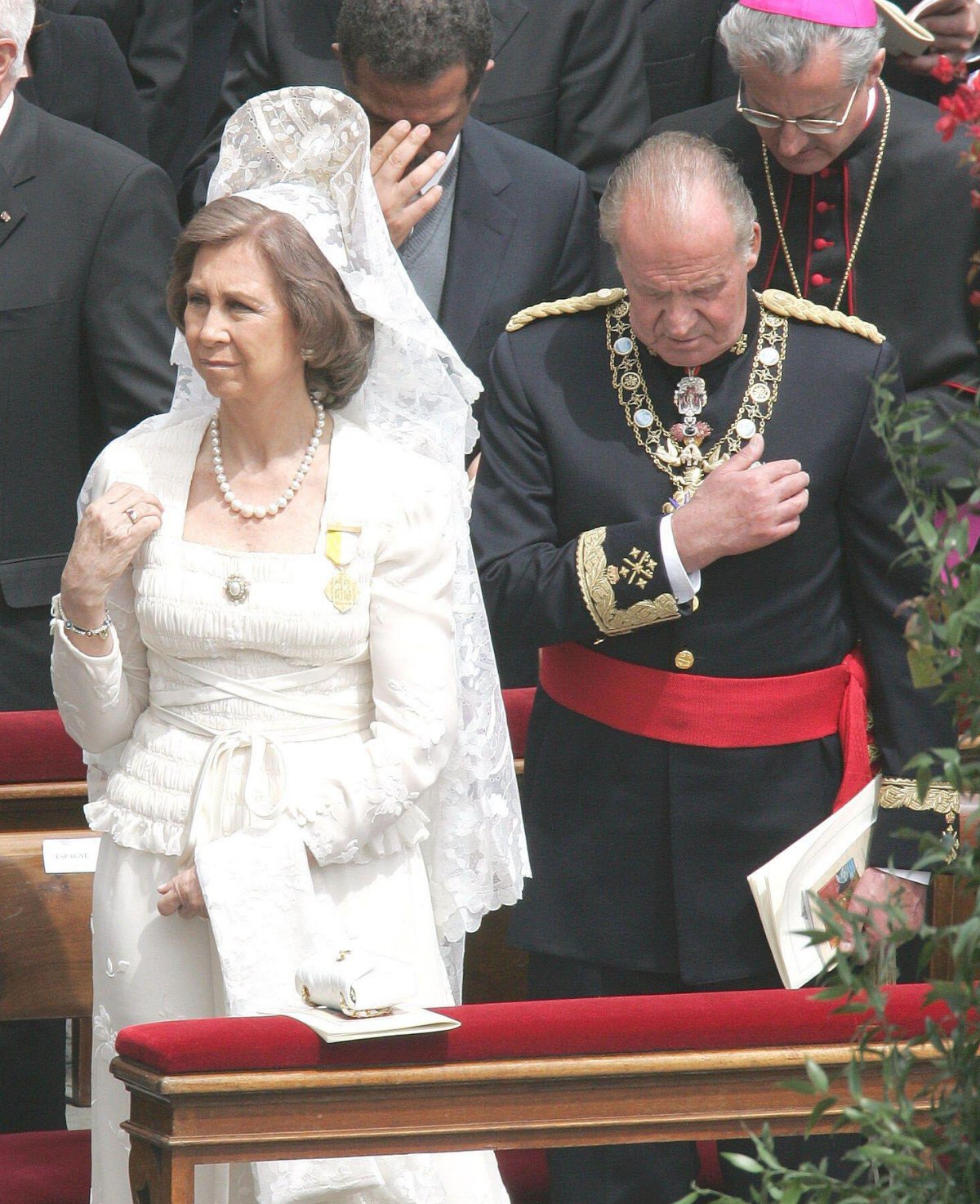
The family has carried out Queen Ena’s wishes, passing the joyas collection down through the generations to each reigning monarch. During King Juan Carlos’s reign, the necklace was worn by Queen Sofia. Above, she wears the pearls at the Vatican in April 2005.
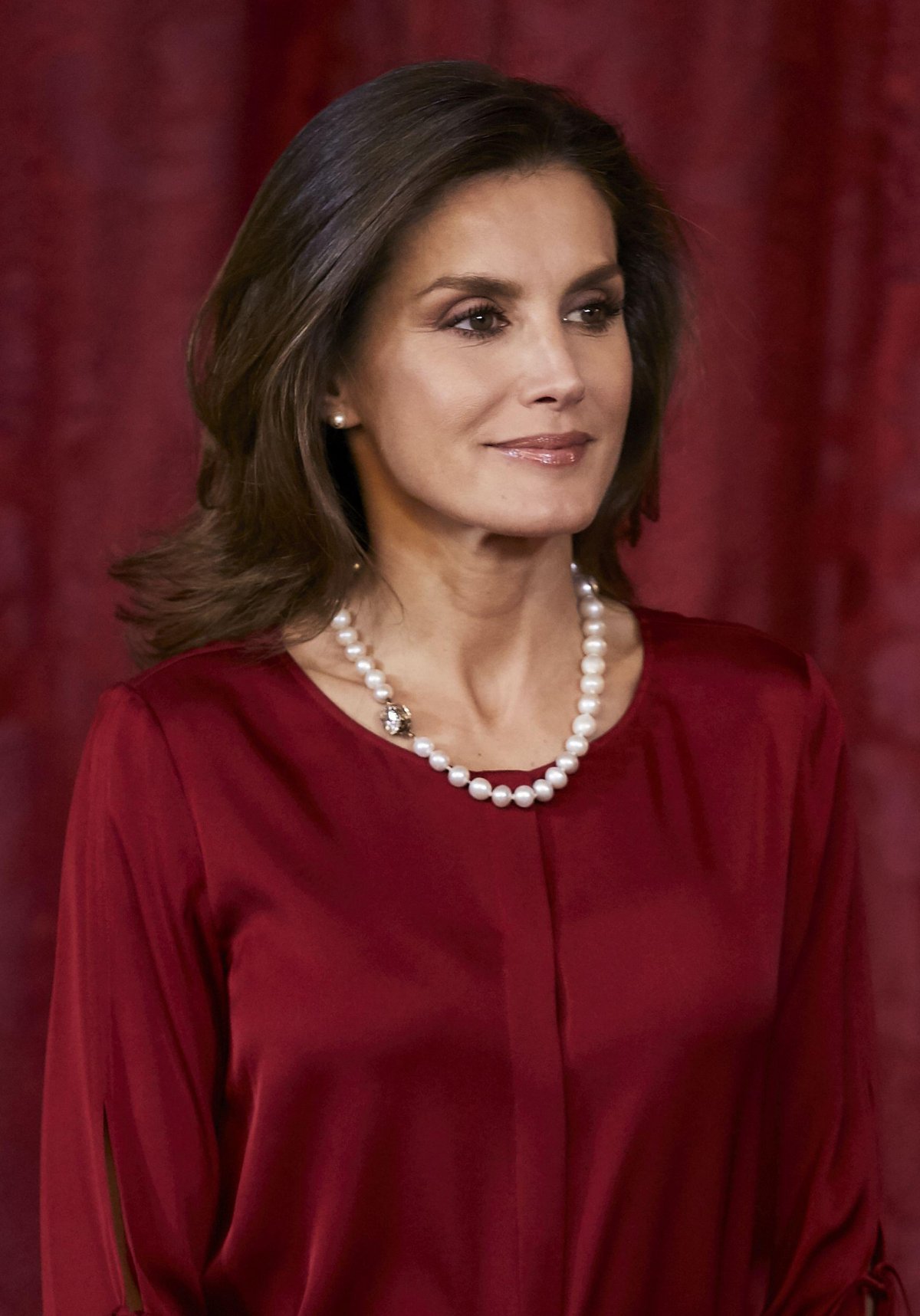
When King Juan Carlos abdicated in favor of his son a decade ago, the jewels were handed over to King Felipe and Queen Letizia. She has slowly worked her way through the collection, and now has worn virtually all of the pieces included in the grouping. The 37-pearl necklace has only been worn by Letizia a handful of times, including a prominent outing during a visit from the President of Germany in 2018. On that occasion, she positioned the pearls so that the necklace’s diamond clasp was visible.

Last September, she wore the pearls again in public, this time for a mass celebrating the life of the King’s late cousin, Juan Gomez Acebo. As both Felipe and Juan are great-grandsons of Queen Ena, the decision to wear the pearls felt particularly apt. On this occasion, Letizia wore the necklace with the diamond clasp placed in the back, and she arranged the pearls so that they followed the neckline of her dress.
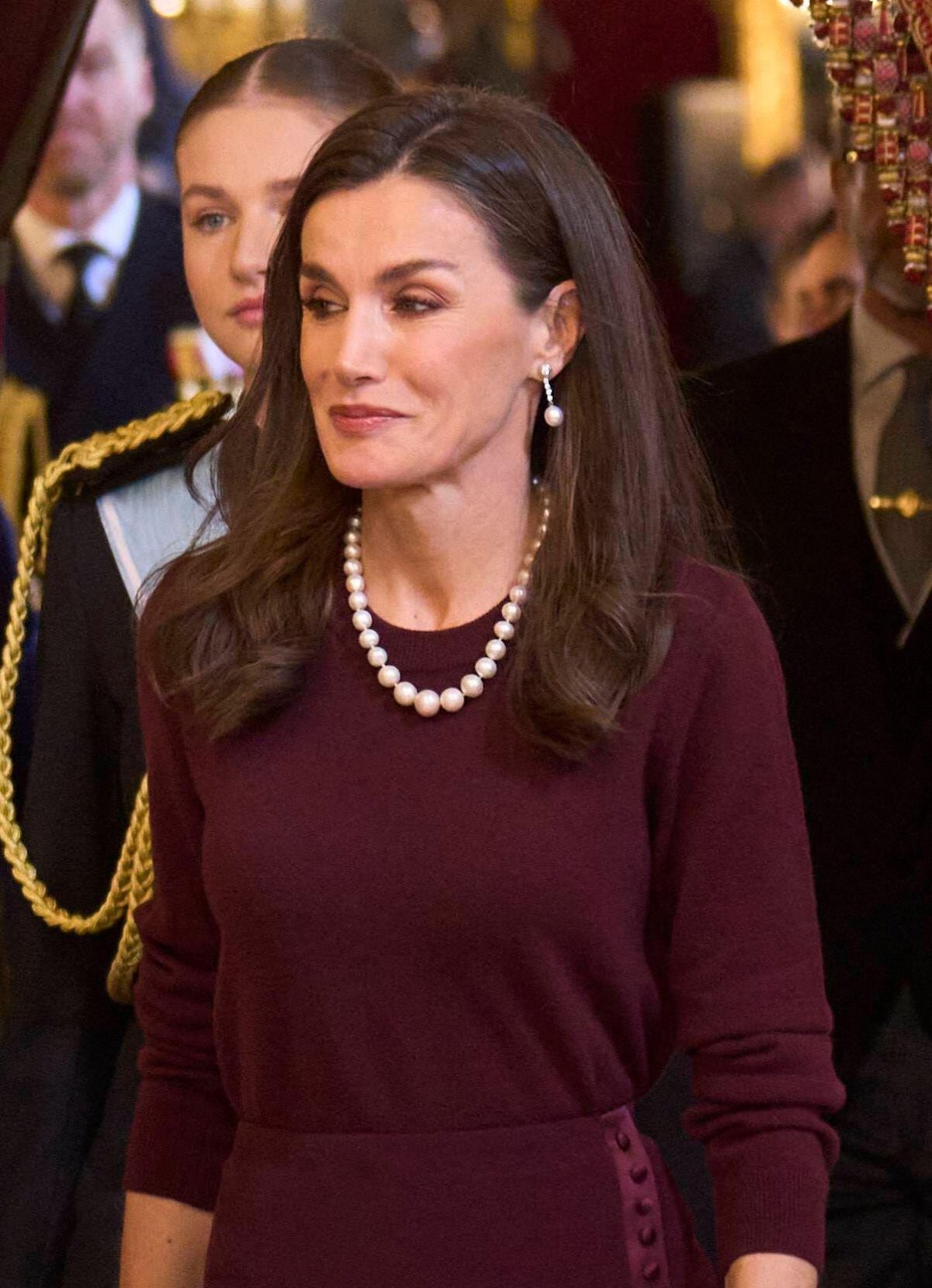
On Monday, Letizia again wore the pearls with the clasp placed at the nape of her neck, but she let them fall to their usual length, allowing them to gleam against the dark wine background of her sweater.
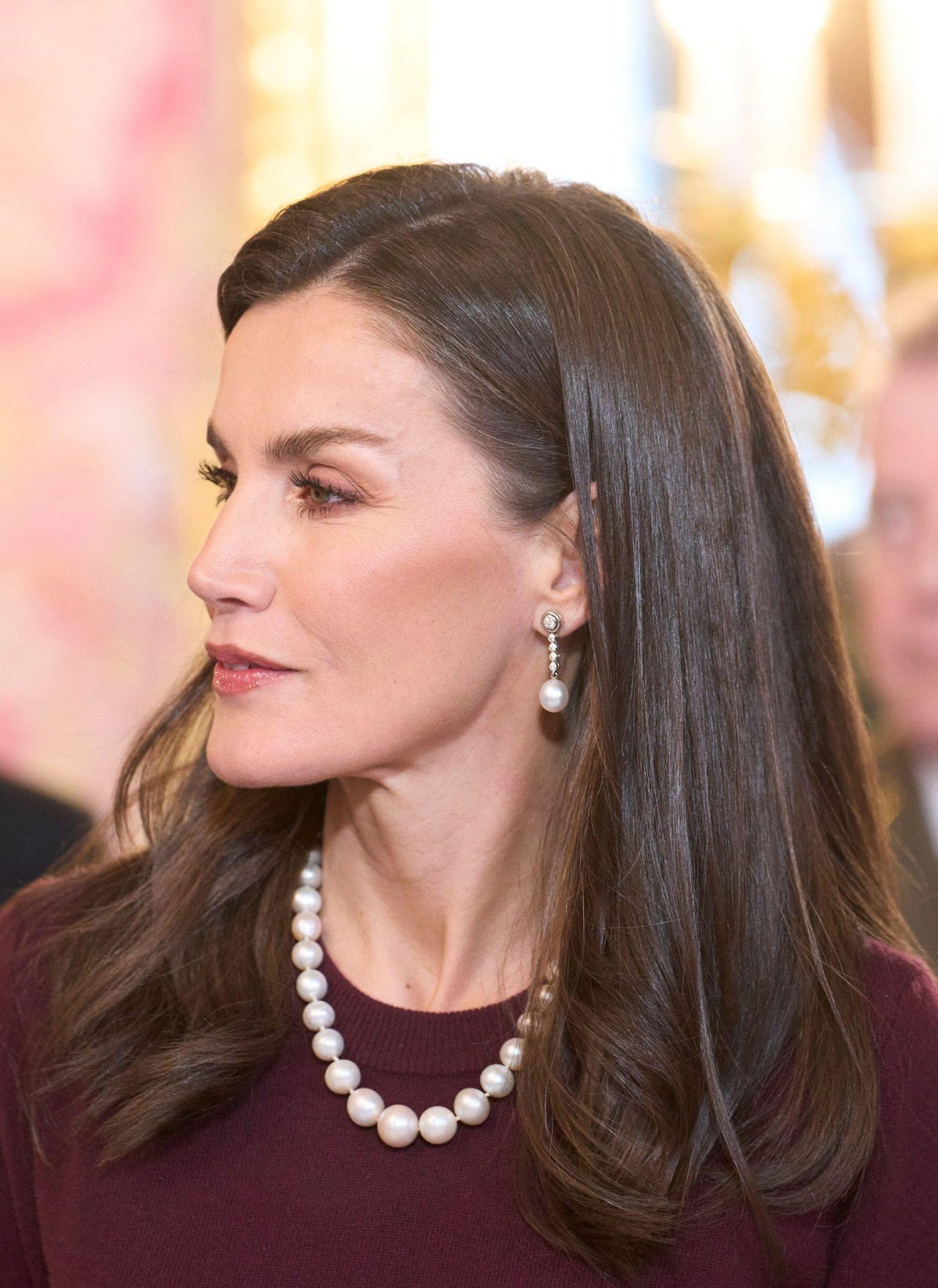
With the necklace, Letizia also wore additional pearls from her personal jewelry collection. Her earrings, which feature bezel-set diamond studs, a diamond chain, and round Australian pearl drops, have been in her jewelry box for the better part of twenty years.
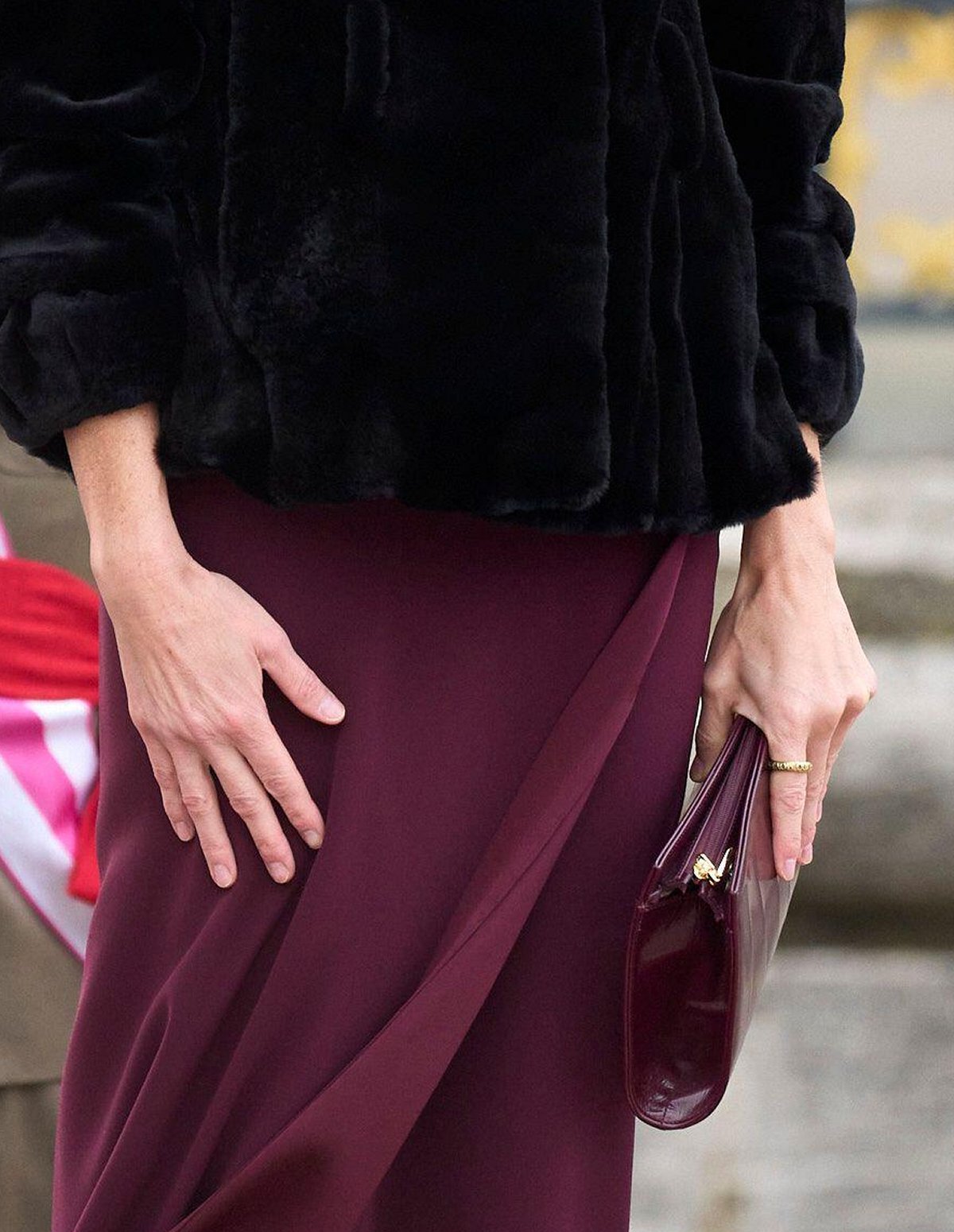
On the index finger of her left hand, Letizia also wore a ring that has been her constant companion since its debut on Pascua Militar two years ago. She made her debut in the gold ring, which comes from an Italian-American brand, Coreterno, on Epiphany Day in 2023. The yellow gold ring is the brand’s “Amor che tutto move” style. The name translates to “Love moves everything,” which is the final line of Dante’s Divine Comedy. The ring also has an engraved inscription inside, which reads, “As long as I’m existing you will be loved.” Many believe that the sentimental ring was a gift from King Felipe.
Leave a Reply
You must be logged in to post a comment.